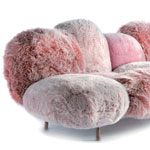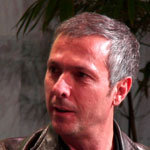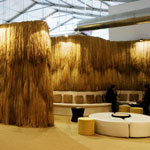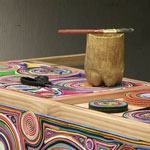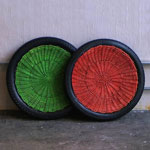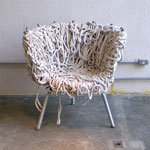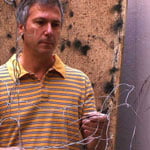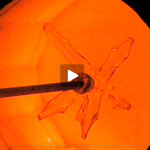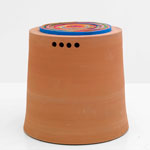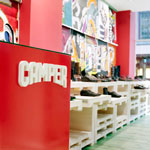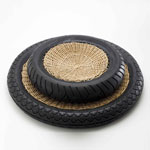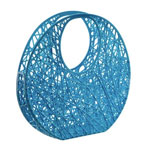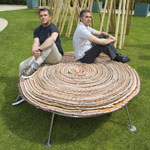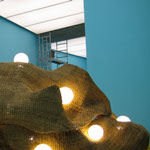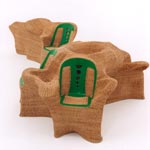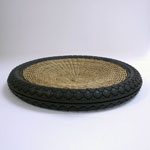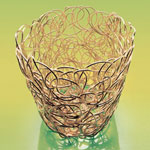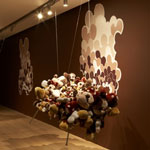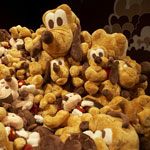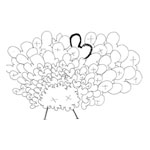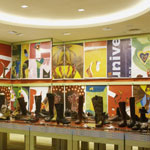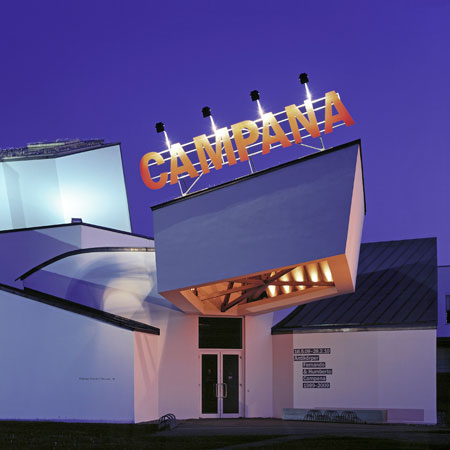
Antibodies by the Campana Brothers at Vitra Design Museum
A retrospective exhibition of work by Brazilian designers Fernando and Humberto Campana has opened at the Vitra Design Museum in Weil am Rhein, Germany.
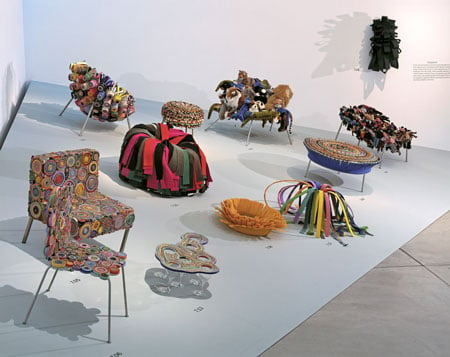
Located in the Frank Gehry-designed museum and arranged thematically, the exhibition charts the brothers' work to date and includes several new pieces.
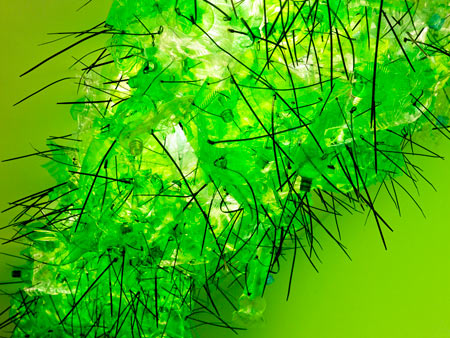
Exhibits include over 70 pieces of furniture plus prototypes, experiments, models and artwork by the Campanas alongside films, interviews, photographs, and objects collected by the designers.
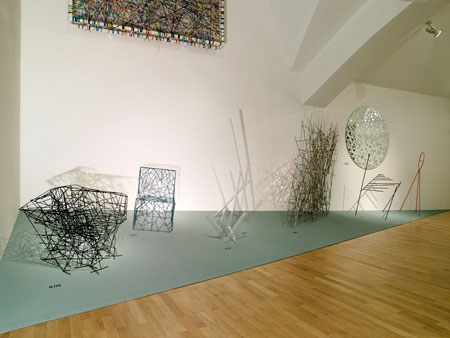
The exhibition continues until February 2010.
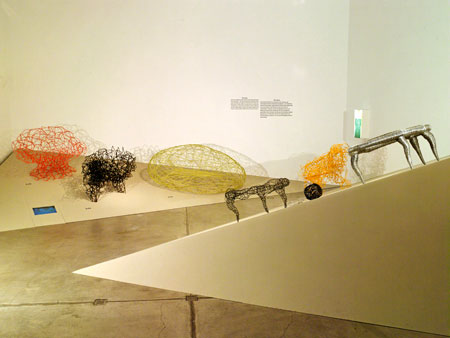
Photographs are by Thomas Dix.
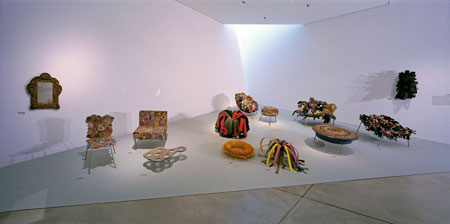
Here's some more information from the Vitra Design Museum:
--
ANTIBODIES
The Works of Fernando & Humberto Campana 1989 - 2009
A Vitra Design Museum exhibition, Weil am Rhein
May 16, 2009 – February 28, 2010
“Our work is about contamination: as much as the world contaminates ourselves, we want to contaminate the world.” Humberto Campana.
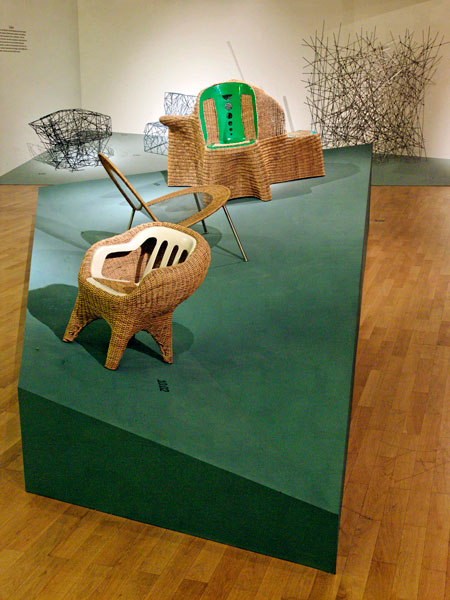
Introduction
The Brazilians Humberto Campana (born in 1953) and his brother Fernando (born in 1961) have worked together as furniture designers in Sao Paulo since 1989. Humberto came to the partnership as a self-taught artist with a degree in law while Fernando had been trained as an architect. The first joint work of this unequal pair – brutalistic, surrealistic furniture sculptures – caused a sensation in the Sao Paulo art scene right from the start. Over the past twenty years, they have established themselves among the most well-known and successful designers of our times, implementing their distinctive and individual language of objects in a tremendously wide-ranging oeuvre of furniture, lighting and installations that has been recognized in numerous publications and exhibitions such as at the Experimenta in Lisbon, the Museum of Modern Art in New York and the London Design Museum.
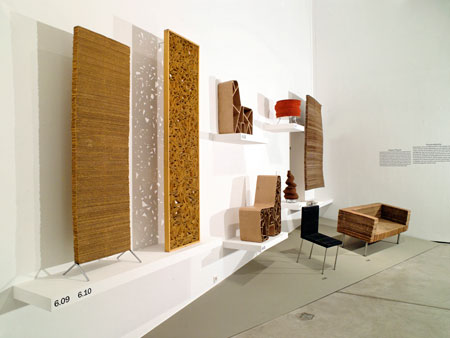
The Campanas’ “Favela” and “Vermela” armchairs, both produced by the Italian furniture manufacturer Edra, the “Banquete” armchairs created by hand in small series in their Sao Paulo- based studio, as well as their inflatable table or the “Plastico Bolha” easy chair made of bubble wrap – each of these objects rapidly became an icon of contemporary design. However, due to the fact that much of their creative work results in these limited series or one-off pieces that often are produced as private commissions, little is known of the true variety and scope of their oeuvre, which has been augmented in recent years by a number of spectacular works. Furthermore, only few attempts have been made to date to trace the guiding principles of their complex body of work. At the same time, the Campanas’ career coincides with the international success of unique, custom- made and accentuatedly artistic designs which often go directly from the maker’s studio to private or public collections without ever being subjected to a regular use. In fact, Fernando and Humberto Campana are perhaps the most prominent exponents of this trend.
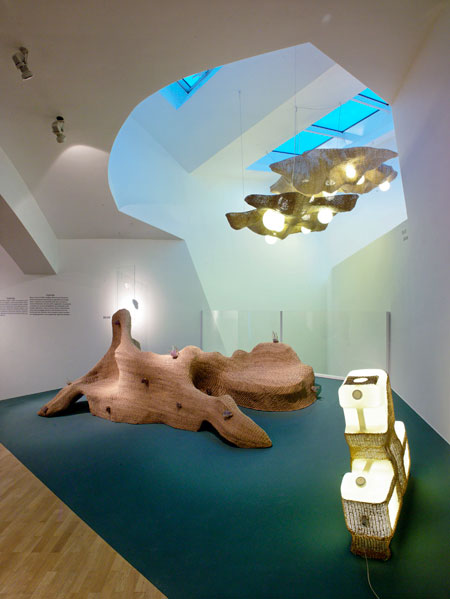

Concept
Through a series of exceptionally successful seminars that the Campanas conducted for its summer workshop program, the Vitra Design Museum established a close relationship with the pair. This association provided the basis for the preparation of this major retrospective offering an overview of their most important works as well as their background. The exhibition highlights the characteristics of an oeuvre whose preoccupation with recycling, the melding of natural and artificial materials and the simultaneity of cultures sketches out a fascinating picture of our time. From the early days up to the present, their work has navigated a narrow path between design and pure art and spawned the most astonishing collages of objects and materials: “It’s a kind of flirt with the material which stands up asking: what can we be transformed into? The material dictates the form and the function in our work.” Thus the exhibition devotes special attention to the Campanas’ working method, which is influenced by various sources of inspiration – the exuberant nature of Brazil’s primeval forests, the improvisations of street hawkers and the shacks of the slums, as well as film, music and fine art. The organization of their studio and the collaboration with external workshops as well as with international companies like Alessi, Edra or Vitra will be documented along with the interdisciplinary work on their latest projects. Along with this most comprehensive overview of their oeuvre to date, featuring a large number of prototypes, experiments and models being shown for the first time, the exhibition presents artworks by the Campanas as well as films, interviews and photos. In nine different groups, the exhibition highlights the formal variety of the works while always keeping the design process transparent.



Biography
Following a biographical introduction with data, photos, a filmed interview and the two chairs “Negativo” and “Positivo” that marked the start of the brothers’ collaboration, the exhibition goes on to present the oeuvre through the structuring of the work in regard to the fundamental formal and technical principles pursued by the Campanas since the beginning of their partnership. Each group comprises iconic key objects that define decisive steps in their career while showing the growth of formulations around these creative principles.
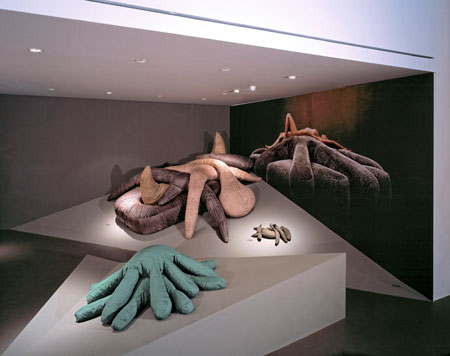

Fragments
“Fragments” shows objects which the Campanas constructed through an assembly of similar parts: a new version of their famous “Favela” armchair from 1991 belongs to this group as well as an abstract terracotta sculpture of shattered forms, which Humberto realized in 1982 – several years before the brothers began working together. In fact, the majority of the exhibition’s groups consist of both early and recent works and thus demonstrate the continuous development of their interests.
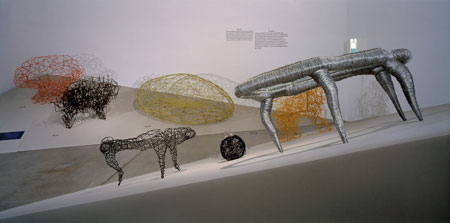

Hybrids
Following a number of experiments in the mid-1990s, the Campanas have returned in recent years to the combination of contradictory materials. The exhibition’s largest object, a sculptural seating of wicker and crystals, realized by the Campana brothers on the occasion of their appointment as Design Miami’s “Designers of the Year” in 2008, will be presented in an installation with other “Hybrids” such as the “Animado” rug of cowhide and synthetic turf from 1997.
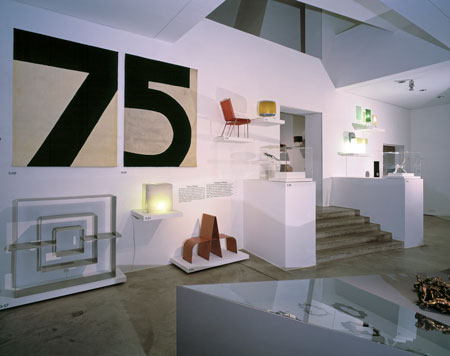

Objets Trouvés
Many of the Campanas’ artistic techniques recall methods utilised by surrealist artists in their painting, graphics, sculpture or film. They link the influence of Surrealism on 20th South American art with the widespread practice of recycling prefabricated objects in their native Brazil and reinterpret these as materials for their own designs.
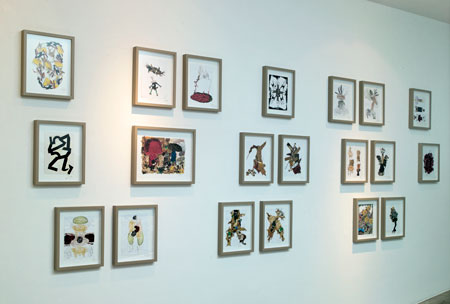

Knots / Sticks
Numerous of the Campanas’ furniture and accessories are created solely from linear structures. Seemingly they depict patterns of the natural and urban jungle as the crucial coordinates of Brazilian life and a permanent inspirational source of Fernando and Humberto Campana, “following amorphous ideas” Fernando Campana². The exhibition shows these sources in slideshows with many examples of their own photographs as well as in two short films shot by the designers themselves: an annotated tour of the center of Sao Paulo and a view of their tree house outside their home town of Brotas.
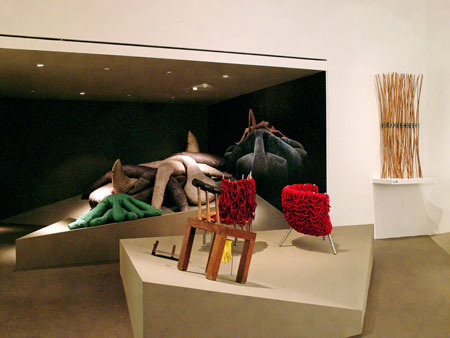

Organics
The fascination nature exerts on Fernando and Humberto Campana is especially evident in numerous pieces of furniture and accessories that take the form of living creatures: in two fruit bowls from 1990, for example, in Edra’s sofa “Kaiman Jacaré”, in their “Drosera” wall pockets for the Vitra Edition or their “Mandacarú” toys. Here as well, the subject will be illustrated by a slide show of some of their excursions.
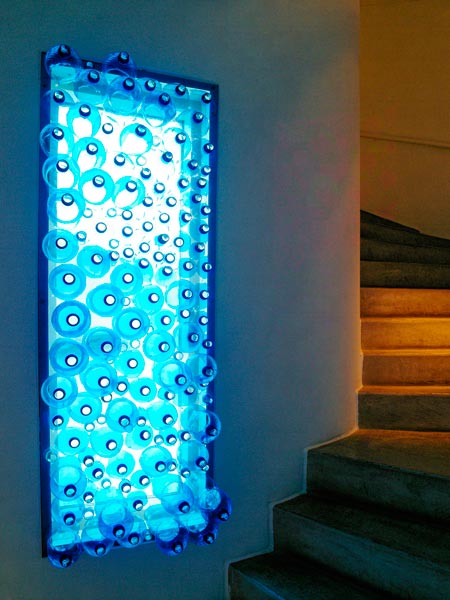

Flexed Planes
The works from the second half of the 1990s seem to hold an exceptional position within their oeuvre. All of a sudden we come across functional objects in sleek geometric forms made of industrial materials: the “Inflavel” side table produced by MoMA in New York for a number of years, the “Labirinto” shelf or the “Cone” armchair, both from 1997, are the most well known examples. At second sight, however, we recognize that these objects too owe their inspiration to a genuine Brazilian motif: the audacious Modernism of an Oscar Niemeyer or Roberto Burle Marx, which are already reflected in Humberto Campana’s sculptures of the early 1980s.
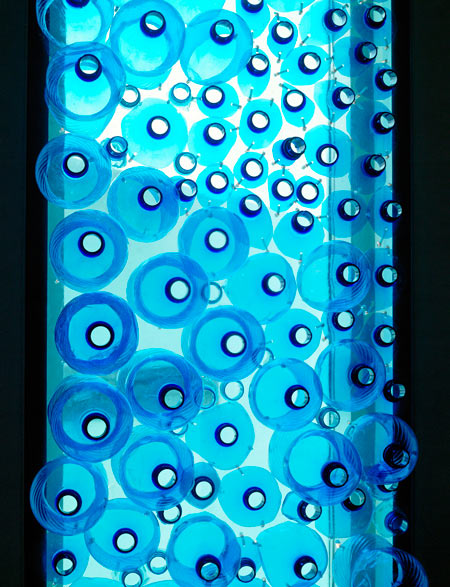

Paper Pieces
The Campanas work almost exclusively with inexpensive everyday materials and discovered the versatility of corrugated cardboard early on. Following a series of Vitra Design Museum’s workshops in Boisbuchet and parallel to the preparation of this exhibition, they are working with Vitra Design Museum on the development of several industrially produced utensils made of paper that the exhibition will present for the first time, along with a documentation of the process of design and production.
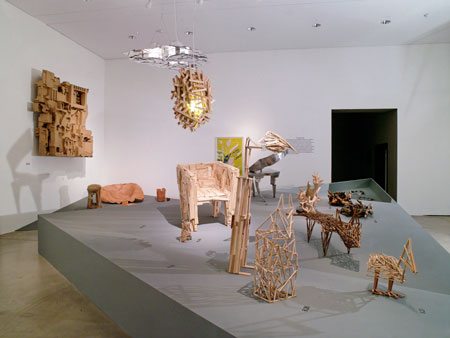

Clusters
The earliest article of daily use in the exhibition is a mirror – one of many that Humberto Campana designed in the early 1980s, excessively decorated with hundreds of seashells he had collected himself at the beach. This exuberant sensualism too is a motif which the Campanas’ work repeats in the most diverse of forms. In their limited series of “Multidao” or “Banquete” armchairs, for example, Vitra Design Museum which have fetched top auction prices in recent years, the Campanas succeeded in using this impulse for their invention of new materials – another example of the recycling that has a constant presence in the streets of Sao Paulo.
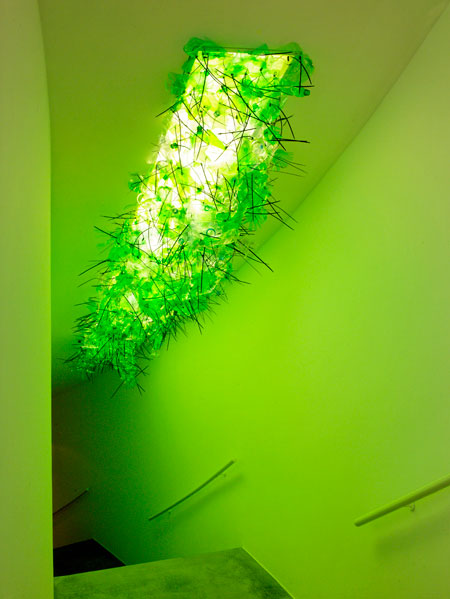

Exhibits
The exhibition encompasses approximately 70 pieces of furniture, 13 lamps, 8 pieces of jewellery and clothing, 50 domestic objects, 20 art objects, 3 architectural models, 25 objects that the Campanas collected themselves, 4 films, 1 slideshow, approx. 10 blow-up photos
Installation
In addition to the core exhibition that will take up 600 to 800 m², designed by the Basel-based studio Groenlandbasel, Fernando and Humberto Campana are creating a special installation that the Vitra Design Museum will stage in its stairways.
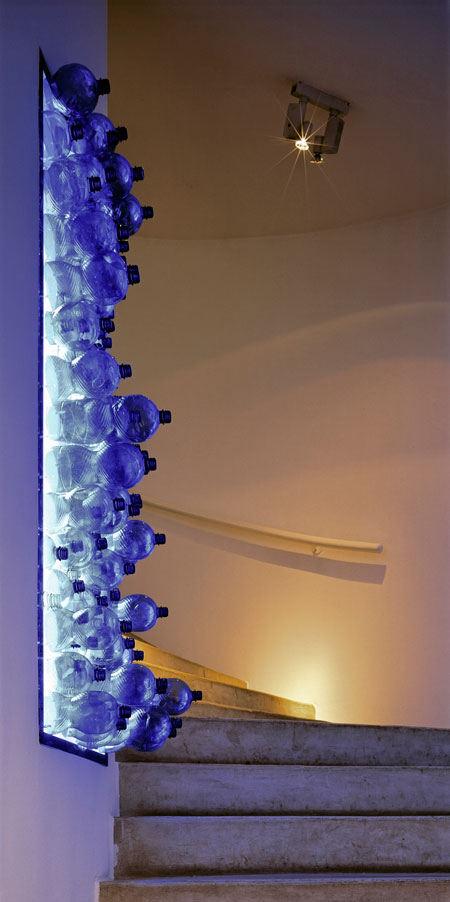

Catalogue
The exhibition will be accompanied by a catalogue, published by Vitra Design Museum in a bilingual English-German edition. The large-format paperback volume of 120 pages contains illustrated articles by international authors: Maria Helena Estrada, design critic and publisher in Sao Paulo, writes a biographical essay on the Campana brothers. Mathias Schwartz-Clauss provides an interpretation of their work of the past 20 years, Massimo Morozzi, artistic director of Edra, offers an account of the Campanas’ collaboration with his company. Adelia Borges, writer, curator and teacher in the field of design, recently invited by the municipality of Sao Paulo to conceive a new museum for popular culture, describes current-day popular culture in Brazil. Finally, Fernando and Humberto Campana contribute nine collages that play with the images of each group’s exhibits. The catalogue’s third section groups all exhibits according to the exhibition’s concept, reproducing them in full color and providing technical details as well as extended captions.
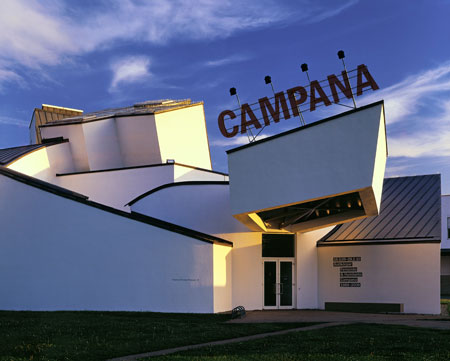

Accompanying sales productsTogether with Fernando and Humberto Campana, Vitra Design Museum will develop a small range of domestic objects including a piece of furniture for the home, which will be available in the Vitra Design Museum Shop.
“Creation is about pleasure – even though there is lots of darkness. You need to go inside yourself to bring out what is new for your soul and for your emotion.” Humberto Campana³
All quotes are taken from an interview with Fernando and Humberto Campana in Sao Paulo, March 2008.
More about the Campana Brothers on Dezeen:
.
